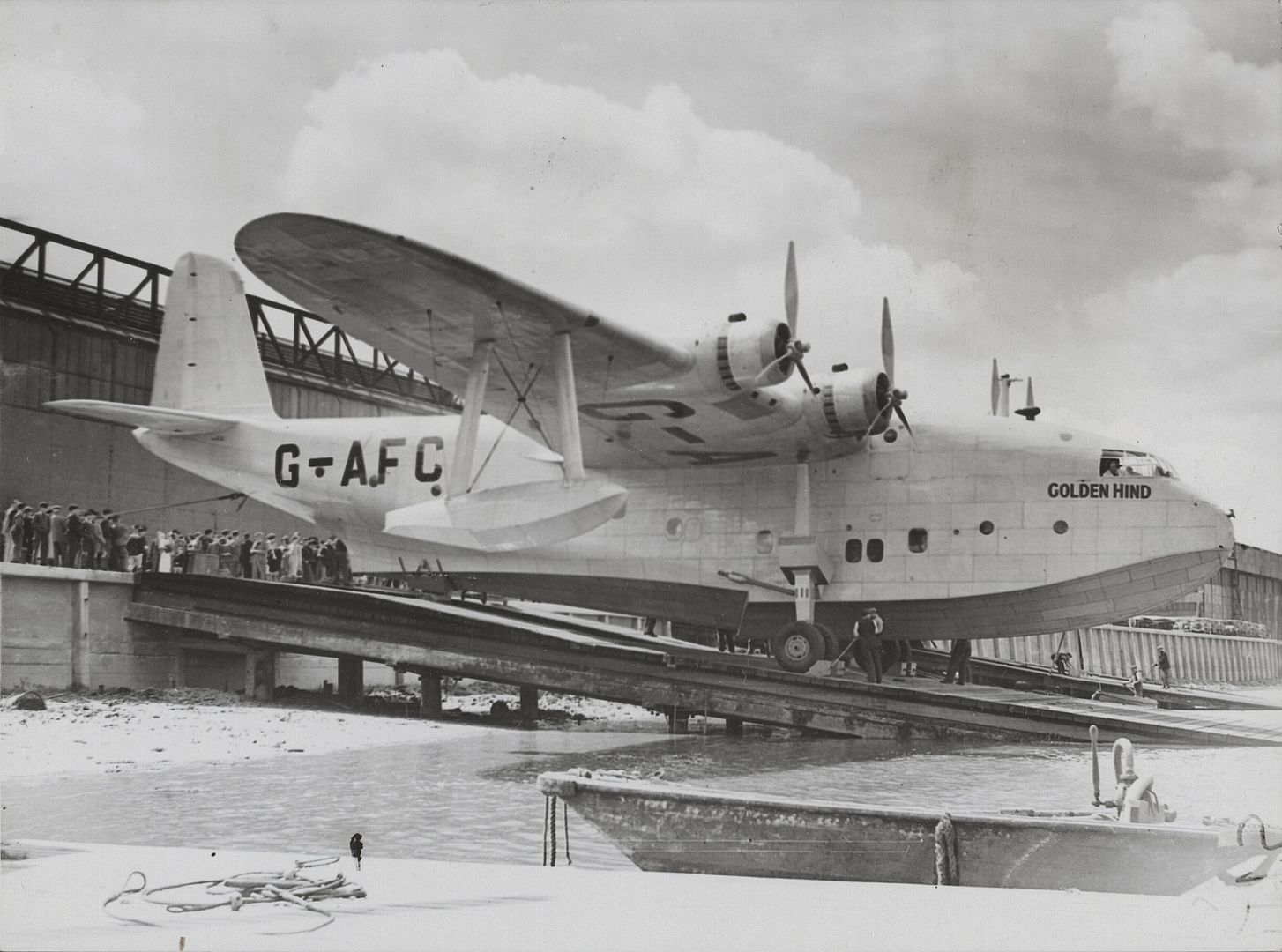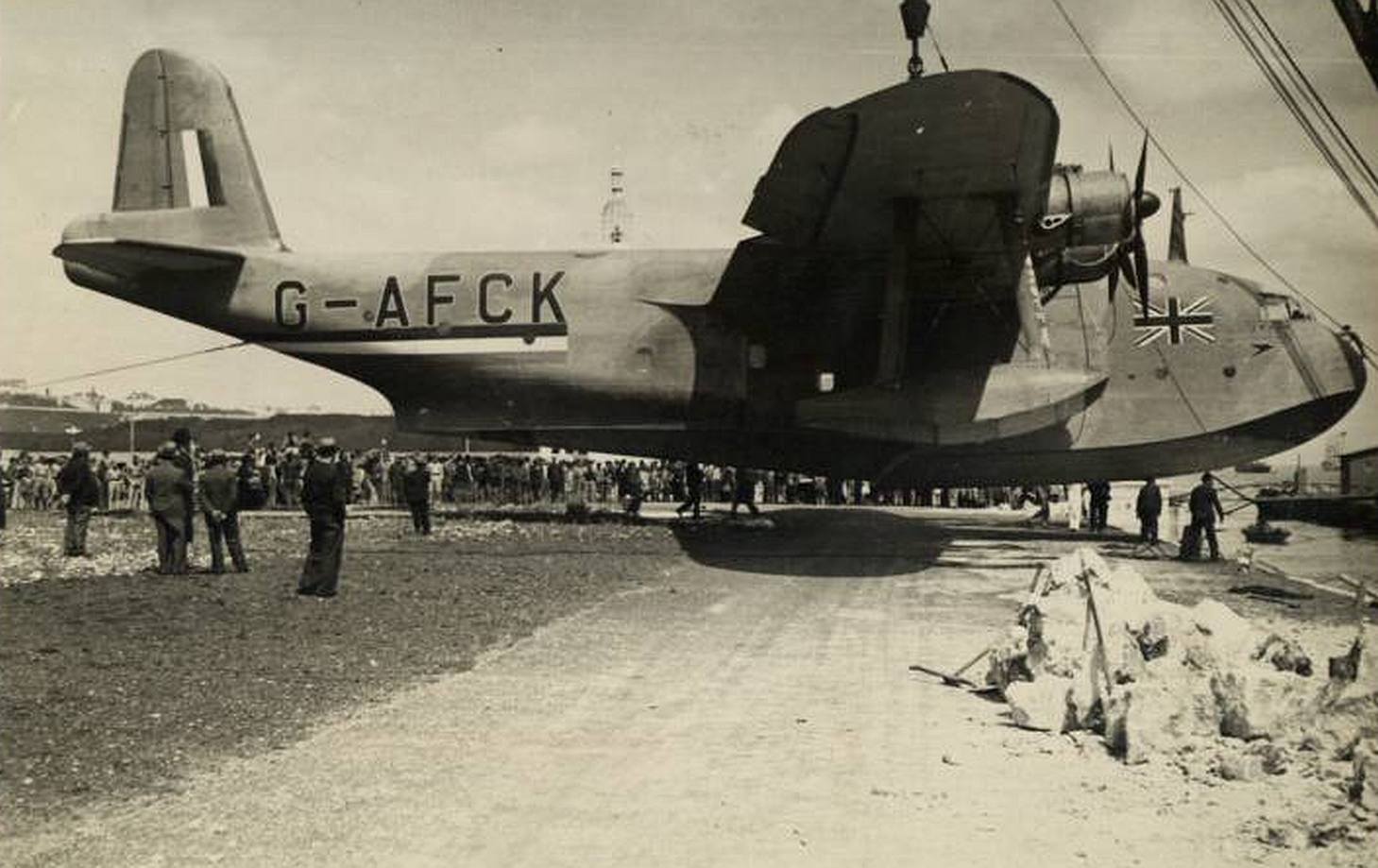Forums
- Forums
- Duggy's Reference Hangar
- RAF Library
- Short S.26
Short S.26
Post a reply
- Go to Previous topic
- Go to Next topic
- Go to Welcome
- Go to Introduce Yourself
- Go to General Discussion
- Go to Screenshots, Images and Videos
- Go to Off topic
- Go to Works in Progress
- Go to Skinning Tips / Tutorials
- Go to Skin Requests
- Go to IJAAF Library
- Go to Luftwaffe Library
- Go to RAF Library
- Go to USAAF / USN Library
- Go to Misc Library
- Go to The Ops Room
- Go to Made in Germany
- Go to Campaigns and Missions
- Go to Works in Progress
- Go to Juri's Air-Raid Shelter
- Go to Campaigns and Missions
- Go to Works in Progress
- Go to Skinpacks
- Go to External Projects Discussion
- Go to Books & Resources
-
 Main AdminThe Short S.26 G-class was a large transport flying-boat with non-stop transatlantic capability. Three aircraft were built for Imperial Airways, subsidised by the Air Ministry in anticipation of military use. All three were impressed into military service.
Main AdminThe Short S.26 G-class was a large transport flying-boat with non-stop transatlantic capability. Three aircraft were built for Imperial Airways, subsidised by the Air Ministry in anticipation of military use. All three were impressed into military service.
Design and development
The S.26 was designed as an enlarged Short C-Class Empire flying boat, also incorporating features from the Short Sunderland. Greater use of extrusions in the structure, rather than bent sheet sections, compared to the C-Class aircraft, helped to keep the weight down. It was powered by four 1,400 hp (1,044 kW) Bristol Hercules sleeve valve radial engines, and it was designed with the capability of crossing the Atlantic without refuelling, and was intended to form the backbone of Imperial Airways' Empire services. The plan was for the first aircraft to make long range runs, the second would operate medium length (2,000 miles) flights with a dozen passengers, and the third would make short range (1,000 miles) trips with 24 passengers. It could fly 6,000 miles unburdened, or 150 passengers for a "short hop". The S.26/M version had defensive armament of 12 0.303 inch machine guns in two dorsal, and one tail, Boulton Paul BPA Mk II four-gun turrets. Offensive armament was eight 500 lb (227 kg) bombs under the wings. There was internal stowage for 20 reconnaissance flares, 28 flame floats and 8 smoke floats. Air to Surface Vessel (ASV) radar was fitted, plus armour plating for the internal fuel tanks and the crew stations.
Operational history
On 21 July 1939, the first aircraft, (G-AFCI "Golden Hind"), was first flown at Rochester by Shorts' chief test pilot, John Lankester Parker. On 24 February 1940, the second (G-AFCJ "Golden Fleece") flew, and the third (G-AFCK "Golden Horn") flew on 8 July 1940.[3] Although two aircraft were handed over to Imperial Airways for crew training, in 1940 all three were impressed (along with their crews) into the RAF, before they could start civilian operation. They were modified by Shorts to S.26/M military configuration before delivery to the RAF as X8275, X8274 and X8273 respectively. After modification at Rochester, Air to Surface Vessel (ASV) RDF (later called Radar) was fitted by Blackburn Aircraft Limited at Dumbarton in Scotland.
From 1941, the S.26/Ms ('G-Boats') served with No. 119 Squadron RAF and No. 10 Squadron RAAF, flying stores to Gibraltar and the Middle East. On 20 June 1941, X8274 (Golden Fleece) was lost off Cape Finisterre, when it broke up following a heavy forced landing, due to the simultaneous failure of two engines. In December 1941, Golden Horn and Golden Hind were returned to BOAC (created in November 1939 by the merger of Imperial Airways and British Airways Ltd.), and fitted out for 40 passengers in 'austerity' seating, then operated between the UK and Nigeria. On 9 January 1943, Golden Horn was lost at Lisbon, when an engine seized and caught fire on a test flight, following an engine overhaul. Golden Hind was employed on other routes in UK and West Africa until the end of the war, and remained in service with BOAC until retired in 1947. From 1947 until 1954 it lay moored in Rochester Harbour near its birthplace, where it had made its first flight. In 1954, it ran aground at Harty Ferry on the Isle of Sheppey whilst on tow to a new anchorage. It was eventually scrapped due to hull damage.
Below cockpit

Below G-AFCI "Golden Hind"







Below G-AFCJ "Golden Fleece"



Below G-AFCK "Golden Horn"
General characteristics
Crew: 7
Capacity: 38 passengers
Length: 101 ft 4 in (30.89 m)
Wingspan: 134 ft 4 in (40.94 m)
Height: 37 ft 7 in (11.46 m)
Wing area: 2,160 sq ft (201 m2)
Empty weight: 37,700 lb (17,100 kg)
Max takeoff weight: 73,500 lb (33,339 kg)
Powerplant: 4 × Bristol Hercules IV 14-cylinder radial engines, 1,380 hp (1,030 kW) each
Propellers: 3-bladed DH constant speed, 14 ft 6 in (4.42 m) diameter
Performance
Maximum speed: 209 mph (336 km/h, 182 kn)
Cruise speed: 180 mph (290 km/h, 160 kn)
Range: 3,200 mi (5,100 km, 2,800 nmi)
Armament
Guns: 2 × dorsal and 1 × tail Boulton Paul BPA Mk. II four-gun turrets
Bombs:
8 × 500 lb (227 kg) bombs under the wings
20 × reconnaissance flares
28 × flame floats
8 × smoke floats
Post a reply
- Go to Previous topic
- Go to Next topic
- Go to Welcome
- Go to Introduce Yourself
- Go to General Discussion
- Go to Screenshots, Images and Videos
- Go to Off topic
- Go to Works in Progress
- Go to Skinning Tips / Tutorials
- Go to Skin Requests
- Go to IJAAF Library
- Go to Luftwaffe Library
- Go to RAF Library
- Go to USAAF / USN Library
- Go to Misc Library
- Go to The Ops Room
- Go to Made in Germany
- Go to Campaigns and Missions
- Go to Works in Progress
- Go to Juri's Air-Raid Shelter
- Go to Campaigns and Missions
- Go to Works in Progress
- Go to Skinpacks
- Go to External Projects Discussion
- Go to Books & Resources
